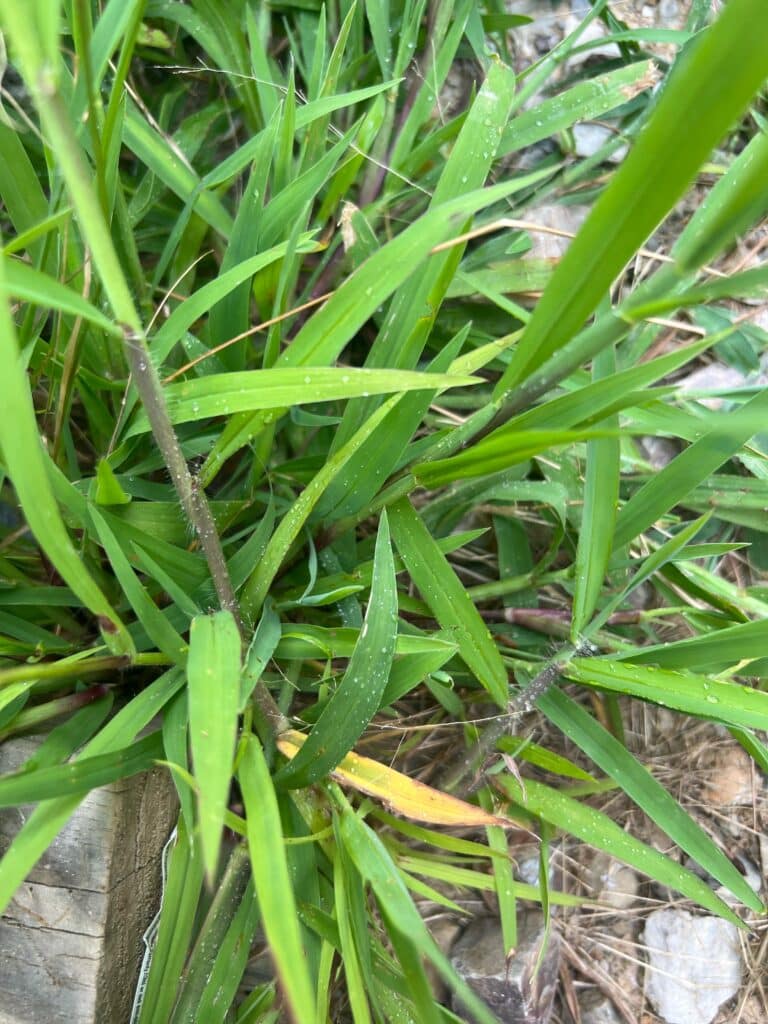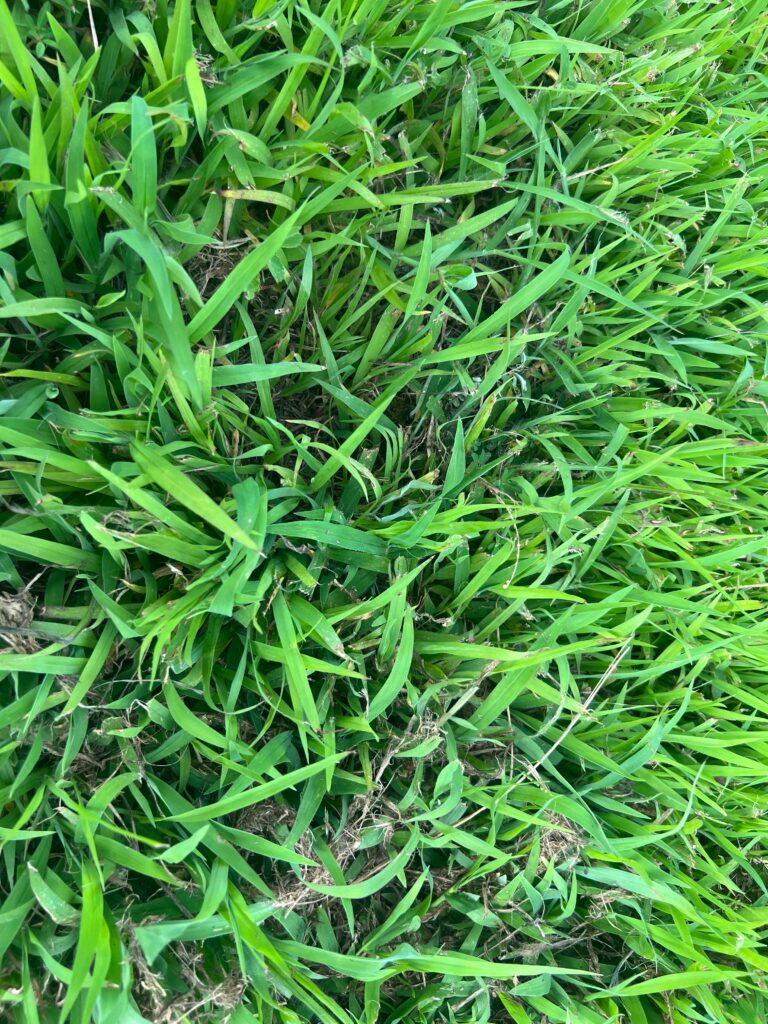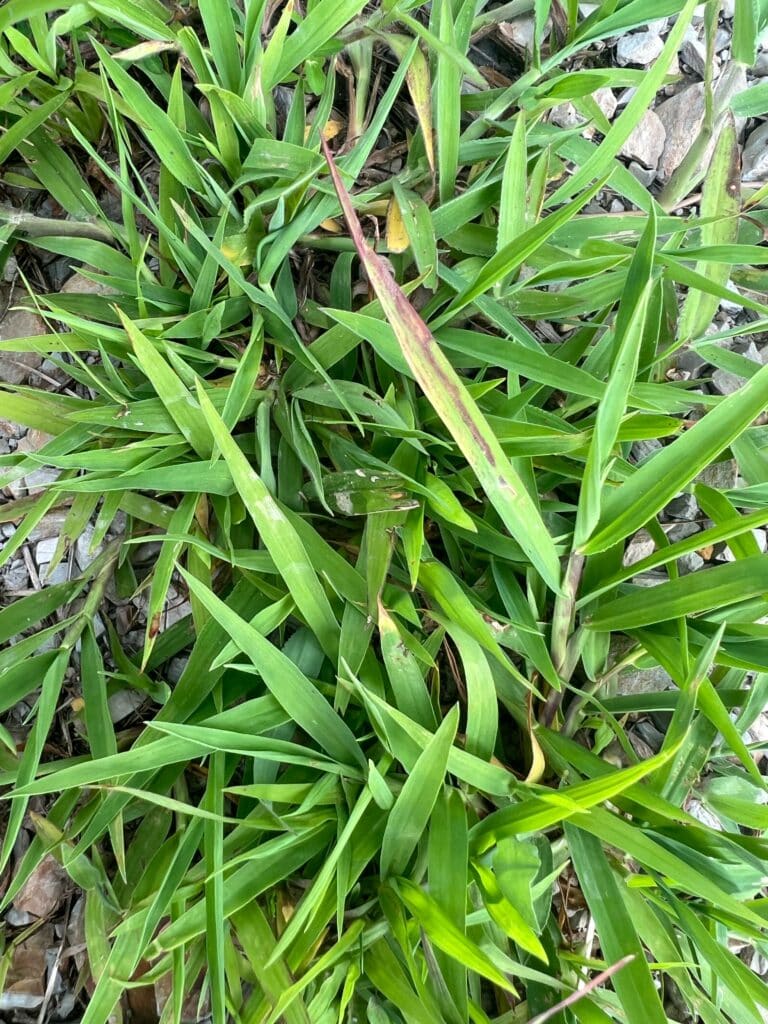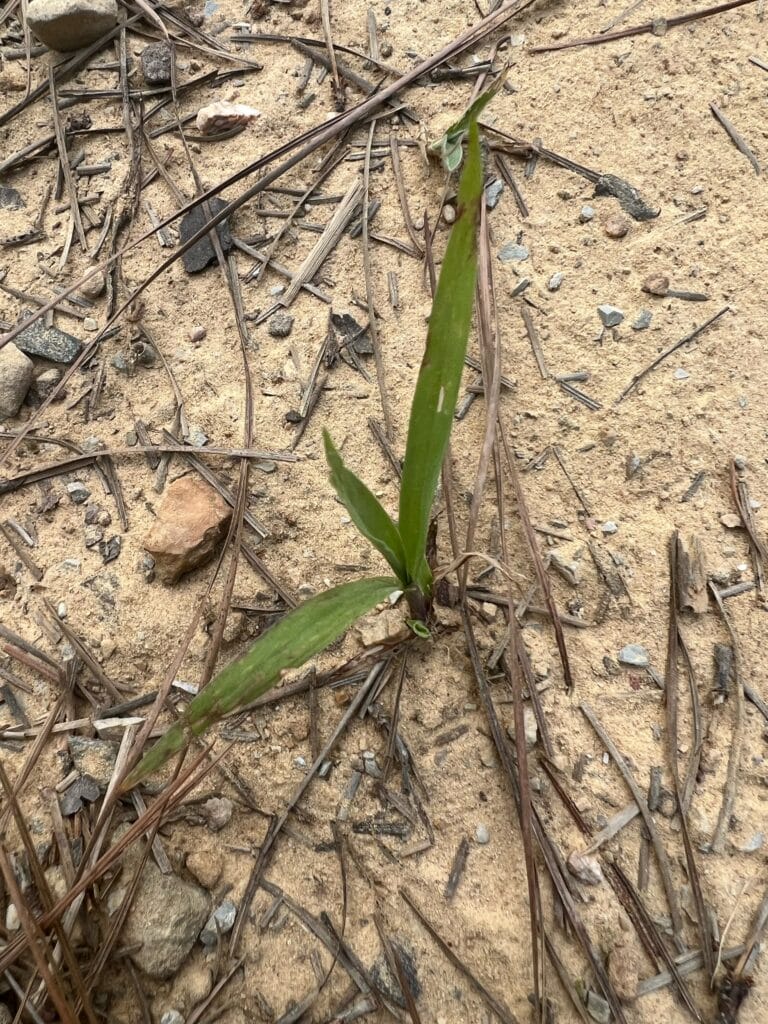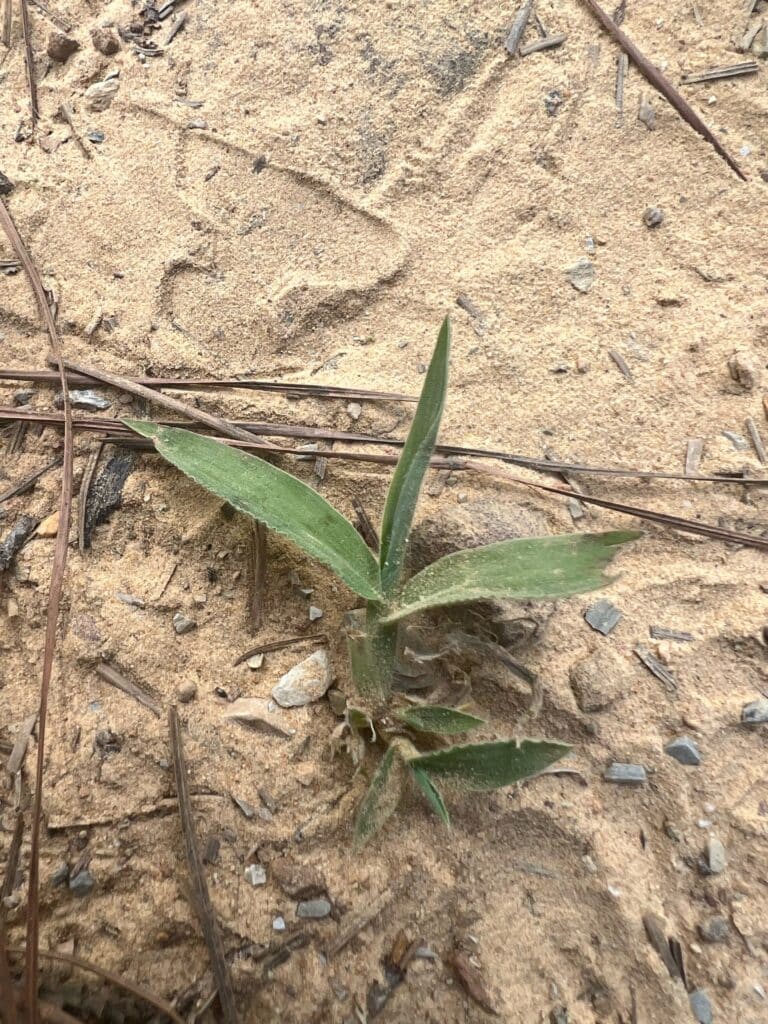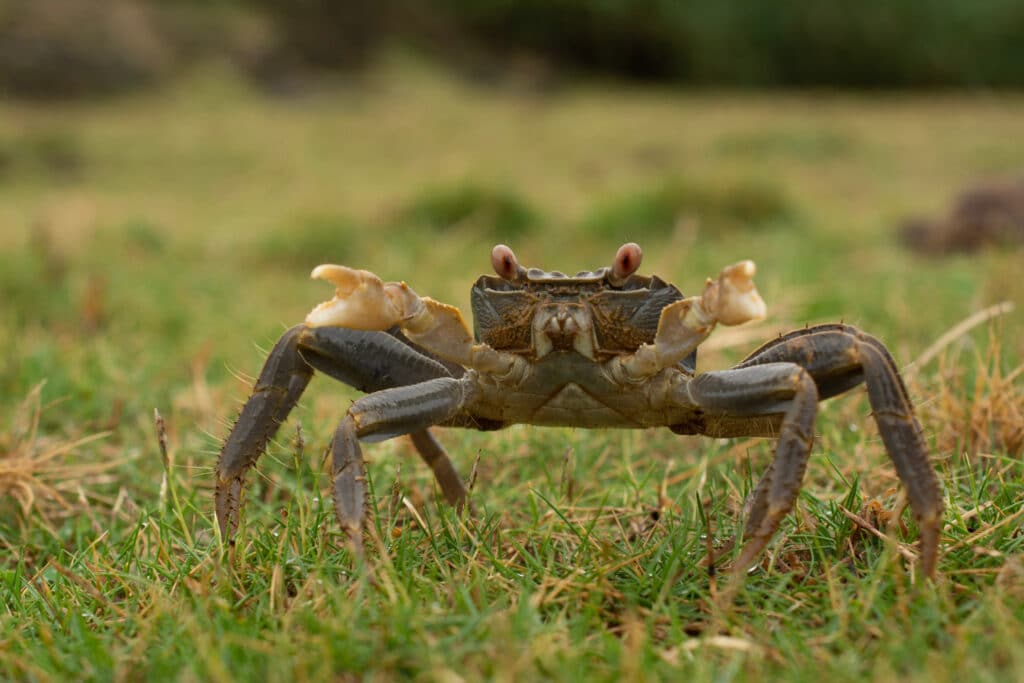How to identify crabgrass in Arkansas lawns.
Updated: Aug 1, 2023
This grass is a common weed that can be found in lawns and gardens. It is an annual grassy weed that spreads quickly and can be quite invasive.
This weed completes its life cycle in one year. It germinates from seeds in the spring, grows throughout the summer, produces seeds in the fall, and then dies off in the winter. It is important to identify this grassy weed early on so that you can take appropriate measures to control and prevent its spread in your lawn.
There are actually three common types of crabgrass that can be found in lawns:
1. Smooth Crabgrass (Digitaria ischaemum): This is the most common type of grassy weed and is often found in lawns with poor soil conditions. It has flat, smooth leaves and can grow up to 6 inches tall.
2. Large Crabgrass (Digitaria sanguinalis): This type of grassy weed is larger and more aggressive than smooth varieties It has wider leaves and can grow up to 2 feet tall.
3. Southern Crabgrass (Digitaria ciliaris): This type of grassy weed is commonly found in the southern United States, including Arkansas. It has hairy leaves and can grow up to 3 feet tall.
Identifying the specific type of weed in your lawn can help you choose the most effective control methods.
What does crabgrass look like
Smooth crabgrass
Smooth crabgrass (Digitaria ischaemum) is a common type of weed found in lawns, including those in Arkansas.
Smooth crabgrass can be identified by its flat, smooth leaves and its ability to grow up to 6 inches tall. The easiest way to tell smooth varieties apart from other varieties is the lack of hairs on leaves or stems. These plants are often red at the the base of the plant.
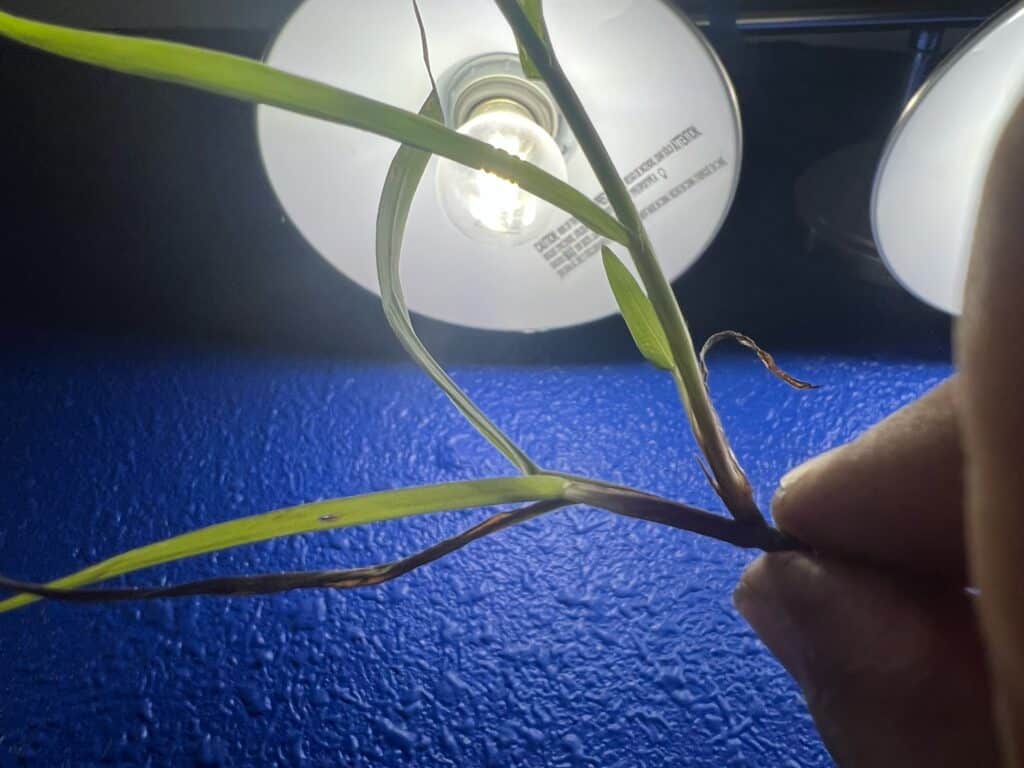
Large crabgrass or Hairy crabgrass
Large or also known as hairy crabgrass (Digitaria sanguinalis) is a type of grass that is larger and more aggressive than smooth crabgrass. Its name does an excellent job of describing this grassy weed. This grassy weed will have hairs all over the plant, including its leaves, stems and leave collars. This grass can grow up to 2 feet tall and has wider leaves compared to smooth crabgrass.
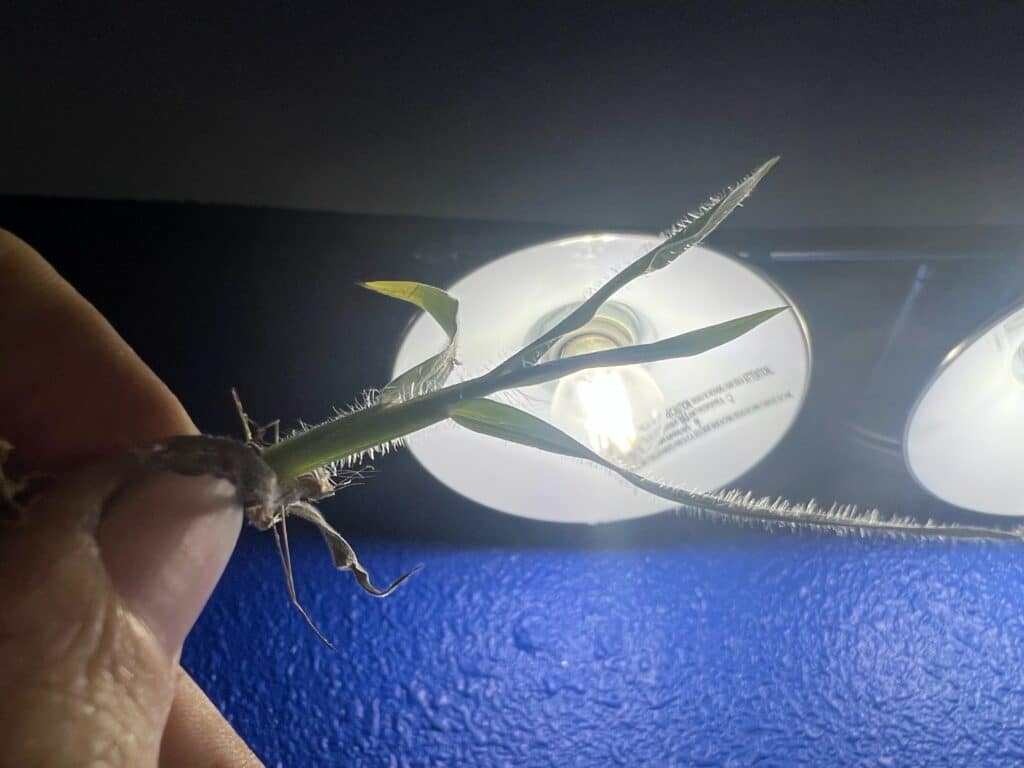
Southern crabgrass
Southern crabgrass (Digitaria ciliaris) is a type of grassy weed commonly found in the southern United States, including Arkansas.
Southern crabgrass has less hairs than the large/hairy variety but more hairs than the smooth variety. The hair on the southern varieties will be found on the leaf sheath of the plant.
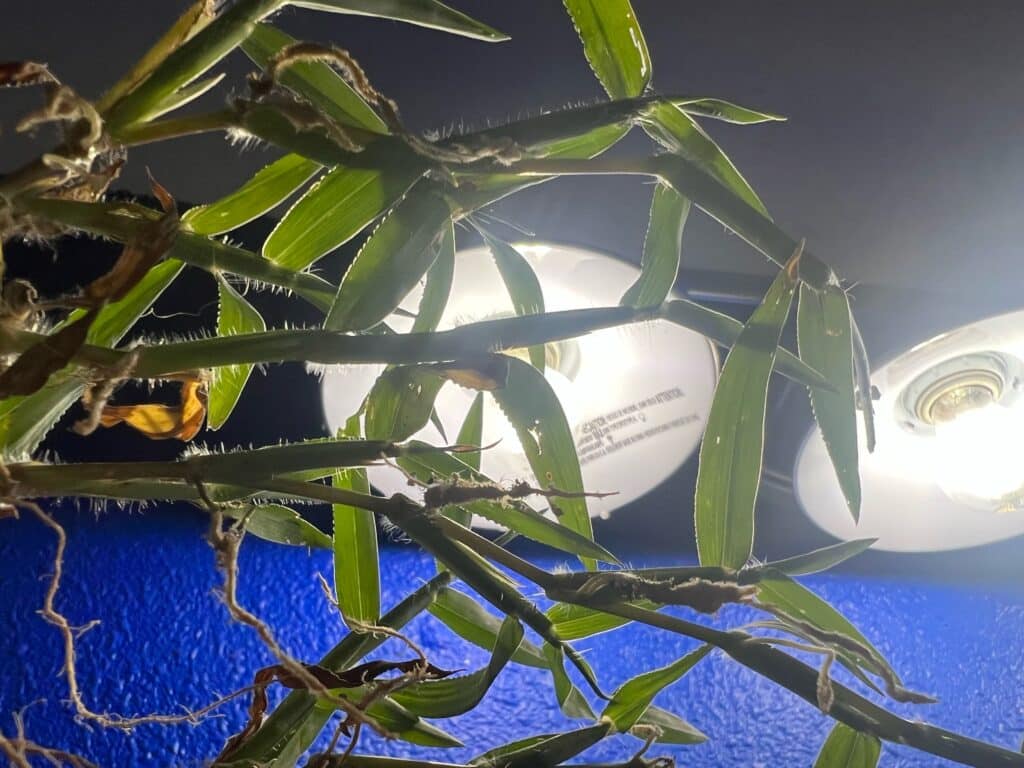
The leaf sheath is between the leaf blade and the stem. The leaf and the stem will have no hair. This grass can grow up to 3 feet tall.
Features common to all three types of crabgrass
This plant can grow flat spreading and covering the ground or it can grow vertically. In lawns due to frequent mowing it often spreads out and forms a thick dense growth pattern. In rocks or gravel its not uncommon to see it growing vertically however it will spread and form dense growth in time.
The leaves of this plant are often light green with a pointed tip. This light green stands out in contrast against desirable turf grasses.
This plant is an invasive annual grassy weed that can spread quickly. These grassy weeds send out off roots at the nodes of the plant. This allows the plant to quickly spread and cover ground.
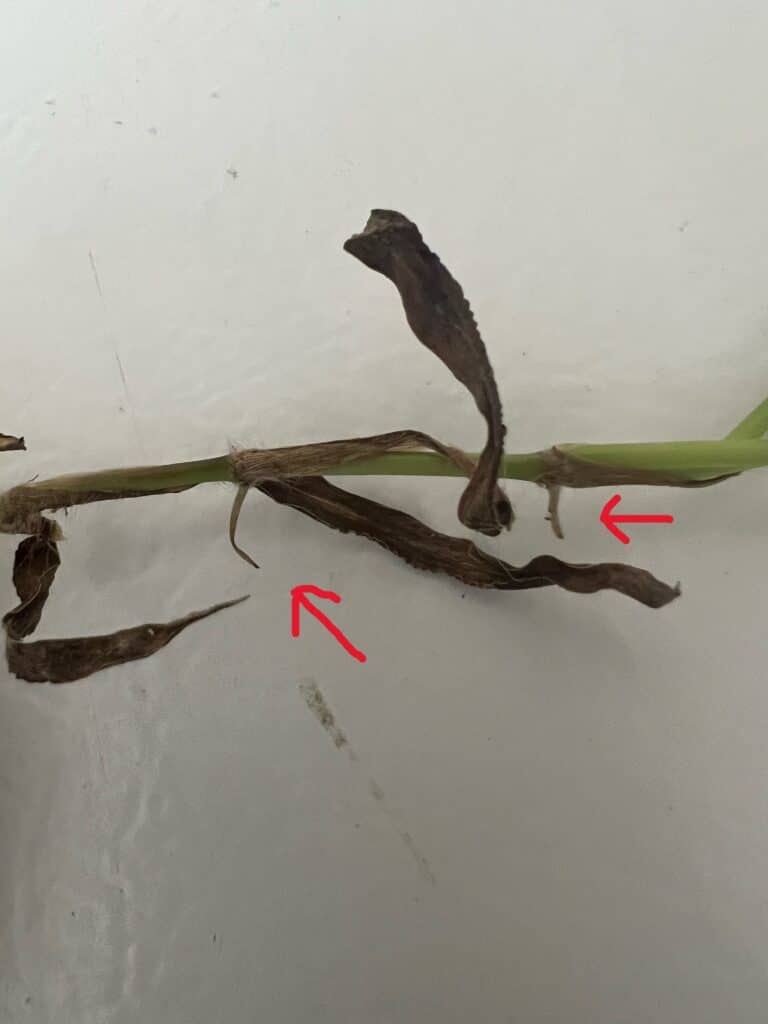
This grassy weed can grow in a variety of soil conditions, but it tends to thrive in areas with poor soil conditions. It is commonly found in lawns with compacted soil, sandy soil or where the grass is thin and weak. This grass loves bare spots. It can also tolerate drought conditions and can quickly take over a lawn if left unchecked.
If pulled these plants have a fibrous root structure. These grasses have a large membranous ligule. The leaf arrangement is rolled in bud and the stem is flat or oval. These grasses lack and auricle.
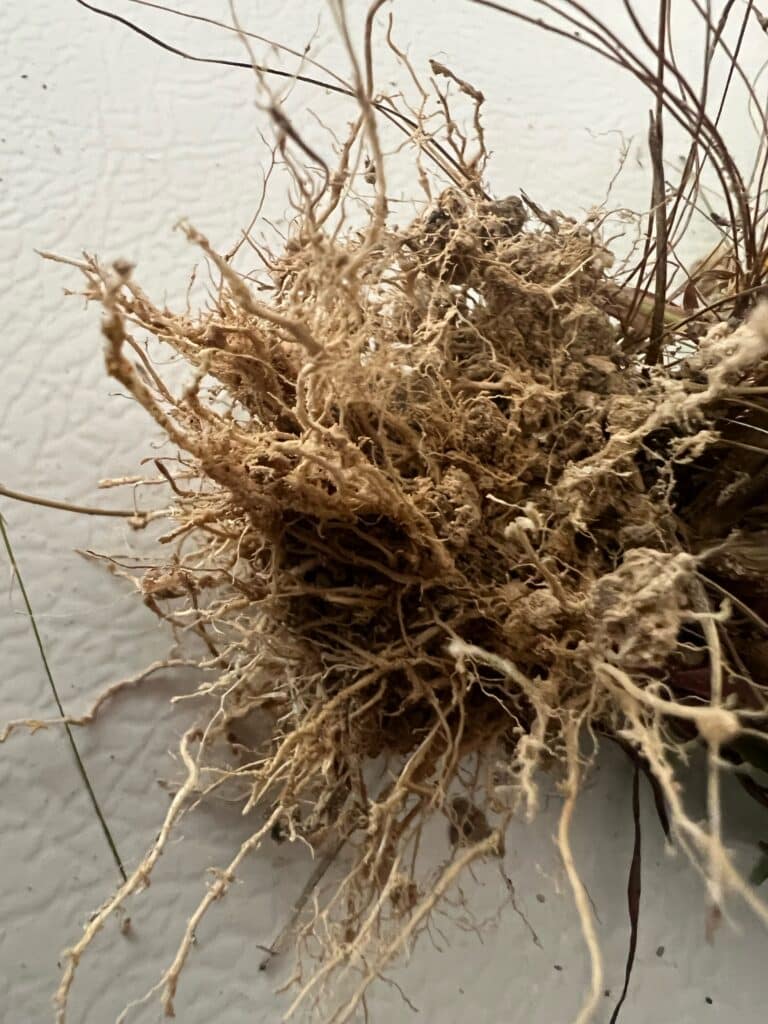
Crabgrass seed heads are the reproductive structures of the crabgrass plant. They appear as clusters of small, finger-like spikes that emerge from the top of the plant. The seed heads are typically green in color and can be quite distinctive to this type of grass. These seed heads contain the seeds of the crabgrass plant, which are dispersed to spread and germinate in new areas.
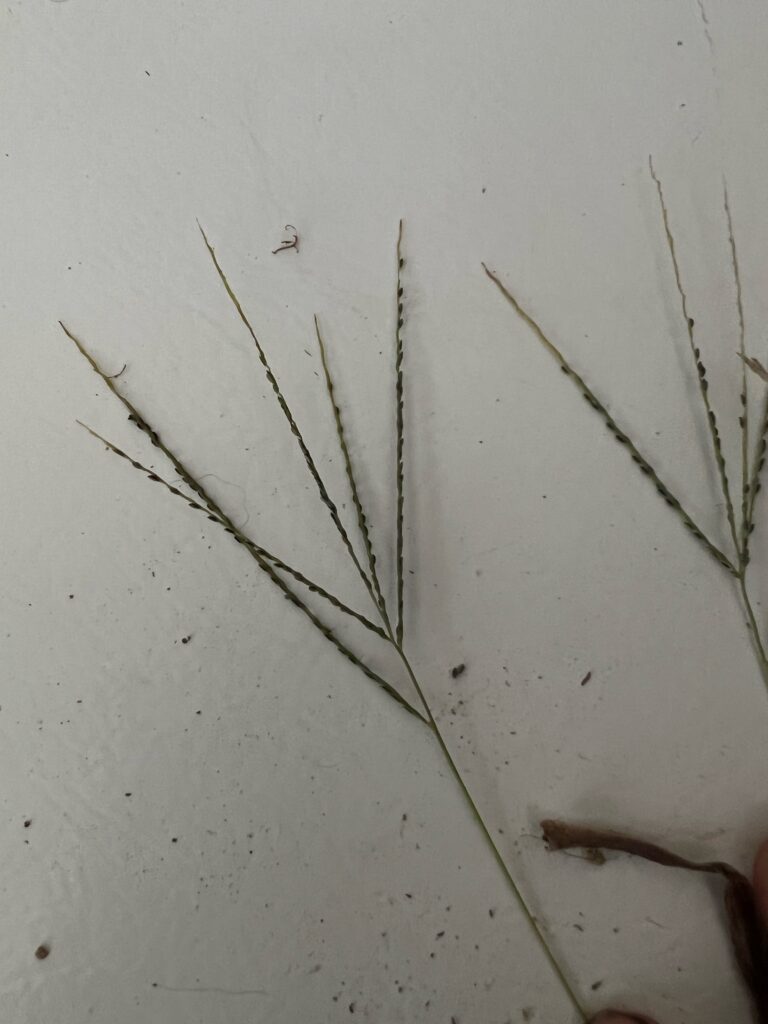
How to get rid of crabgrass
To effectively control this grassy weed, it is important to identify it early on and address it during regular lawn care. Crabgrass prevention can include using crabgrass pre-emergent herbicides in the spring to prevent the germination of the seeds.
In arkansas this is typically done before March 15th. Once the soil temperatures reach 55 degrees for at least 3 days at a two inch depth the seeds will begin to germinate. At that point using post emergent crabgrass killer will be required to kill any existing plants. Maintaining a healthy lawn to prevent this pesky grass from taking hold.
Keeping a lawn thick and healthy requires a lot of work, time, and knowledge. Time that can be better spent with family and friends.
At Advance Lawn Care our lawn care technicians are state approved to provide weed control services in hot springs arkansas. When considering the steep markup of ineffective products at box stores our services are often similar to the prices of DIY weed control. Your family and friends miss you.
Sincerely
Advance Lawn Care
Here some additional crabgrass photos for reference:
